Fold.AR: Unleash the magic of paper folding
Discover intricate geometries in augmented reality. Explore the possibilities.
Folding paper holds significant relevance in elevating the senses of space and design in architecture due to several factors
as its versatility, adaptability, expressiveness, tactility, and cultural significant.
In essence, folding paper serves as a powerful design tool in architecture, offering architects the opportunity to elevate
the senses of space and design by creating dynamic, adaptable, expressive, and culturally resonant built environments.
Through innovative applications of folding techniques, architects can shape spaces that inspire, engage, and enrich the human experience
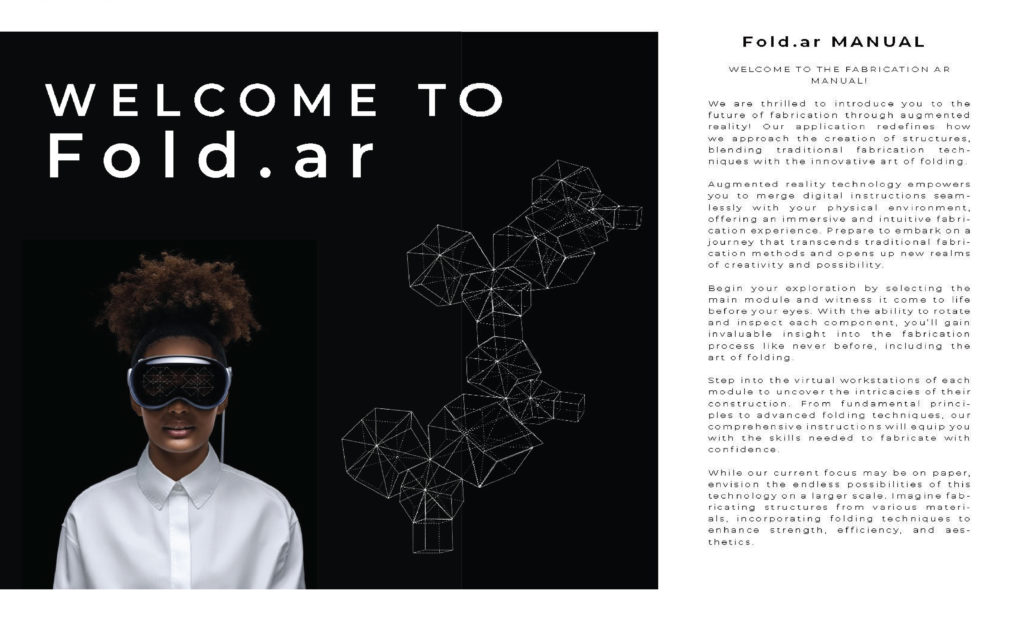
FOLD.AR is a delightful augmented reality application that showcases the magic of AR by providing step-by-step folding instructions,
turning simple patterns into mesmerizing geometric shapes. It invites users to explore and have fun with various folding techniques
while also unlocking endless possibilities for creative module aggregation.
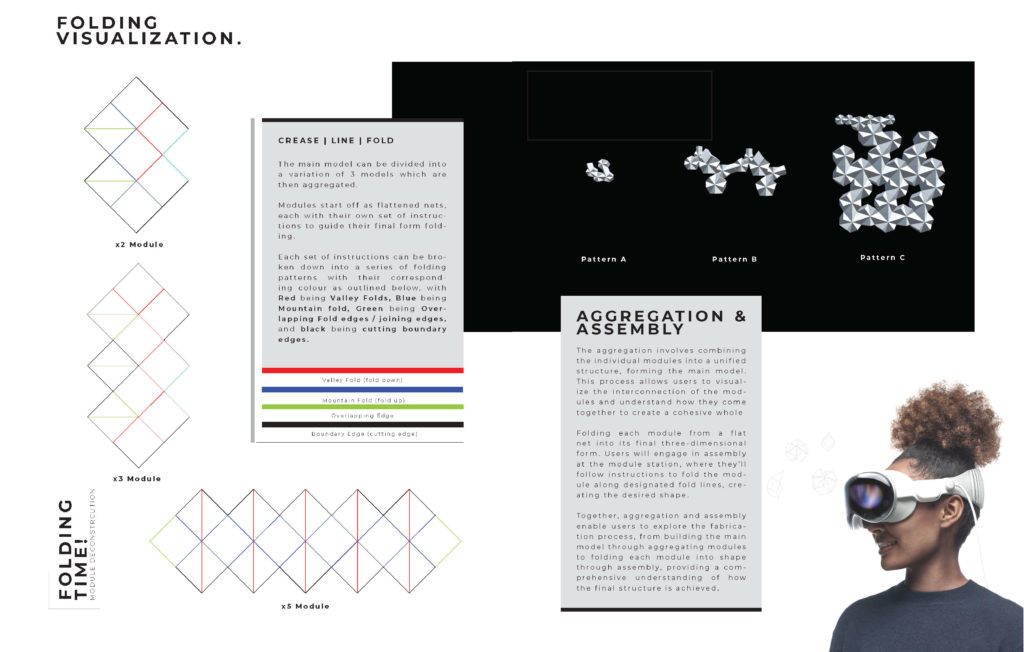
The FOLD.AR interface is divided into three sections:
Part 1 allows users to select the geometry they wish to study
Part 2 seamlessly integrates the AR camera with the chosen geometry. Users can easily track their workflow step by step
with the guide located beside the workspace.
Part 3 the aggregation assistant visualizes the aggregation process in the easiest way possible, along with a diagram of its connections.
Users can ensure they connect the right side and direction, making the entire process enjoyable and enabling them to explore the logic of folding
while discovering many more possibilities of basic patterns.
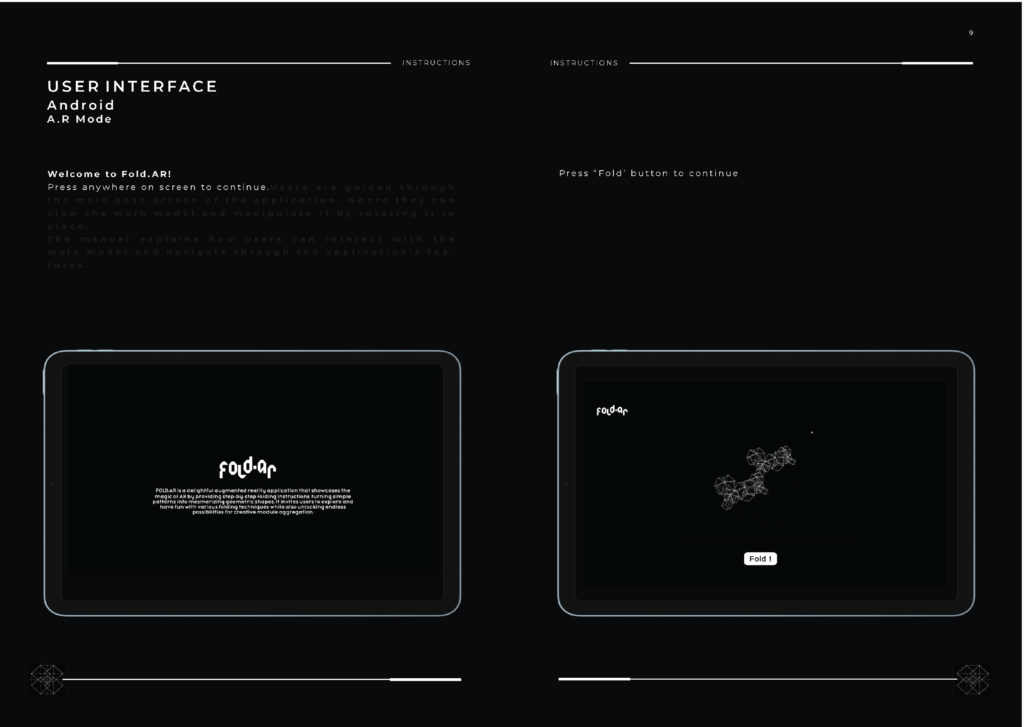
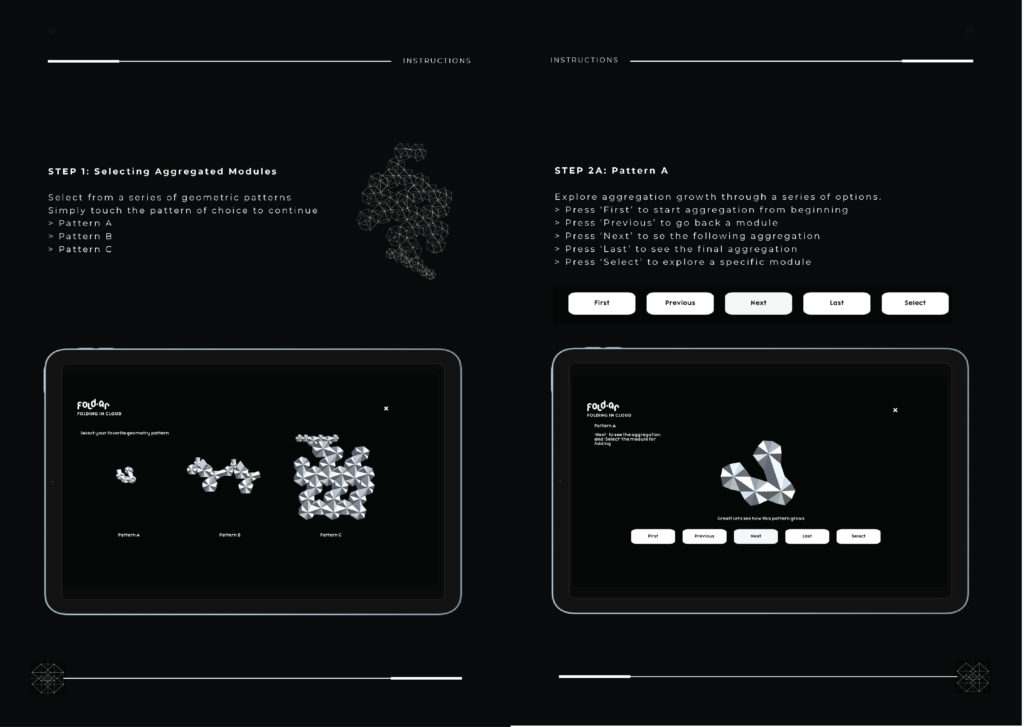
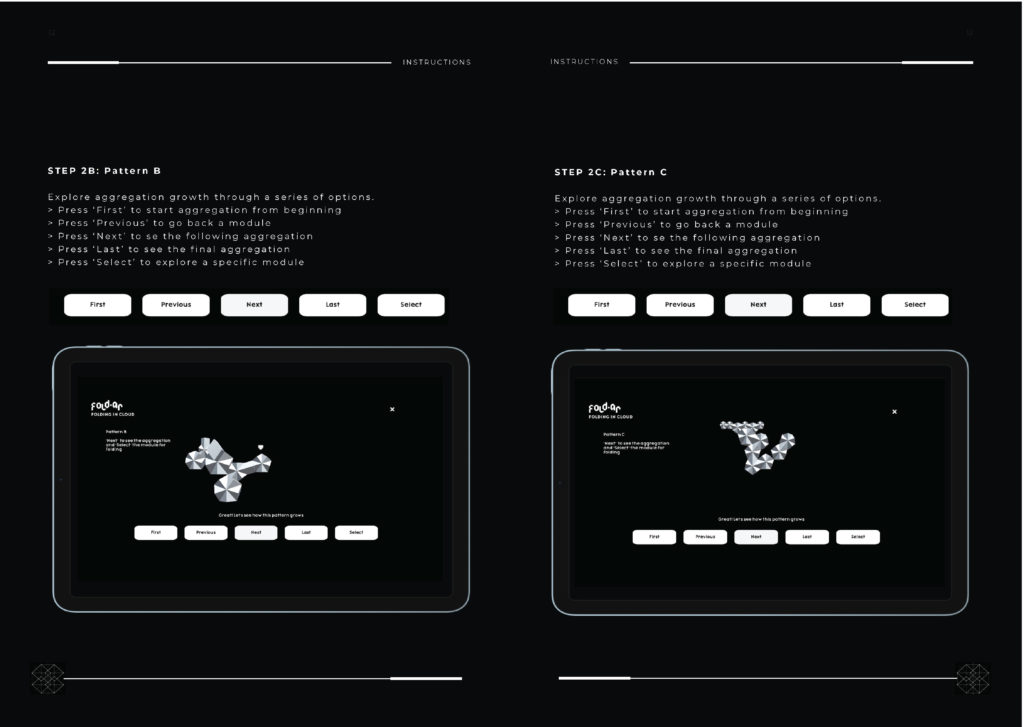
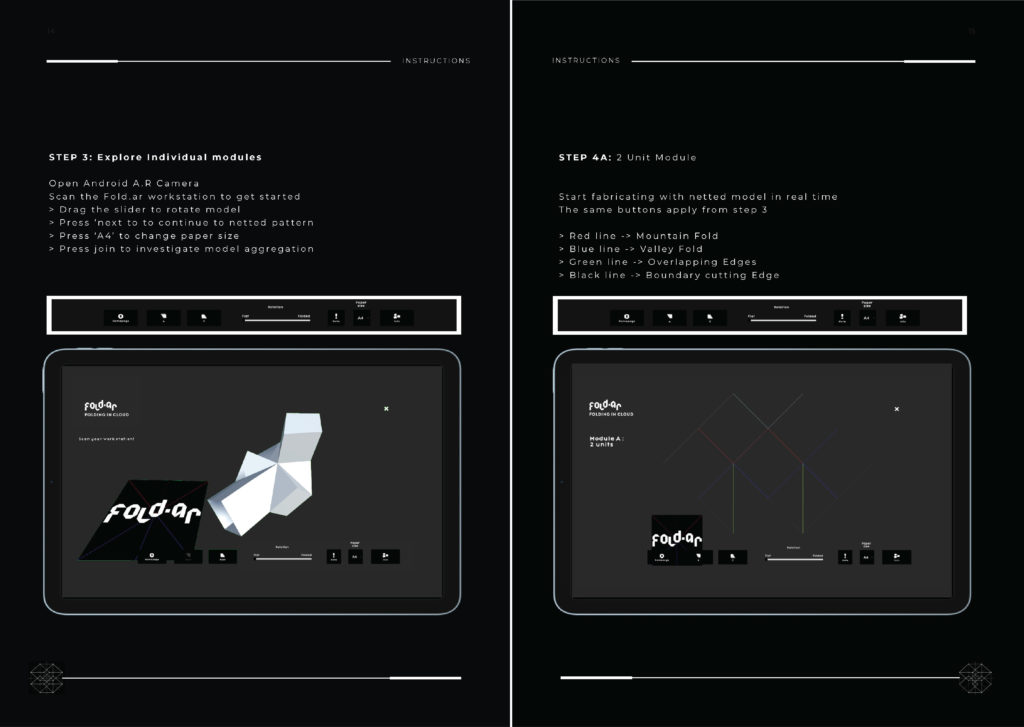
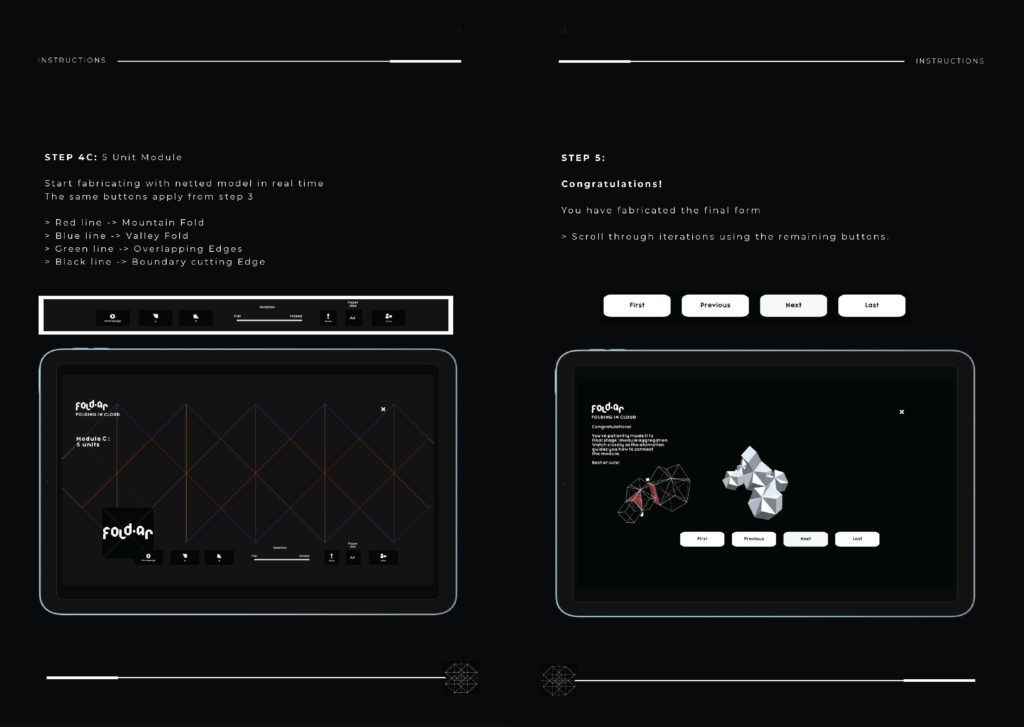
Integrating folding paper logic with augmented reality (AR) in architectural design offers a blend of physical and digital experiences,
enabling enhanced visualization, customization, and interaction for the future. Here are five examples:
- Interactive Folding Instructions: Develop an AR application that provides real-time folding instructions overlaid onto physical architectural elements. Users can interact with virtual guides that demonstrate folding techniques and assembly processes, aiding in the construction of foldable structures such as partitions or movable walls.
- Virtual Prototyping: Use AR to visualize and test foldable architectural elements within the built environment. Designers can virtually fold and unfold structures in real-time, exploring various configurations and assessing their impact on spatial qualities, functionality, and aesthetics.
- Customizable Design Exploration: Implement AR tools that allow users to customize foldable architectural elements according to their preferences. Through gesture-based interactions, users can manipulate virtual models, adjusting folding patterns, dimensions, and material properties to create personalized designs that meet their specific needs.
- Dynamic Space Transformation: Create immersive AR experiences that showcase the transformative capabilities of foldable architectural elements. Users can interact with virtual simulations to witness how spaces evolve and adapt in response to changing requirements, such as reconfigurable furniture layouts or flexible room partitions.
- Educational Demonstrations: Offering interactive demonstrations of folding paper logic applied to architectural design. Users can explore virtual environments where they learn about origami-inspired principles and their applications in creating innovative architectural elements.
By integrating folding paper logic with augmented reality, architects and designers can leverage digital technologies to revolutionize the design,
visualization, and implementation of foldable architectural elements, leading to more adaptable, interactive, and engaging built environments.

